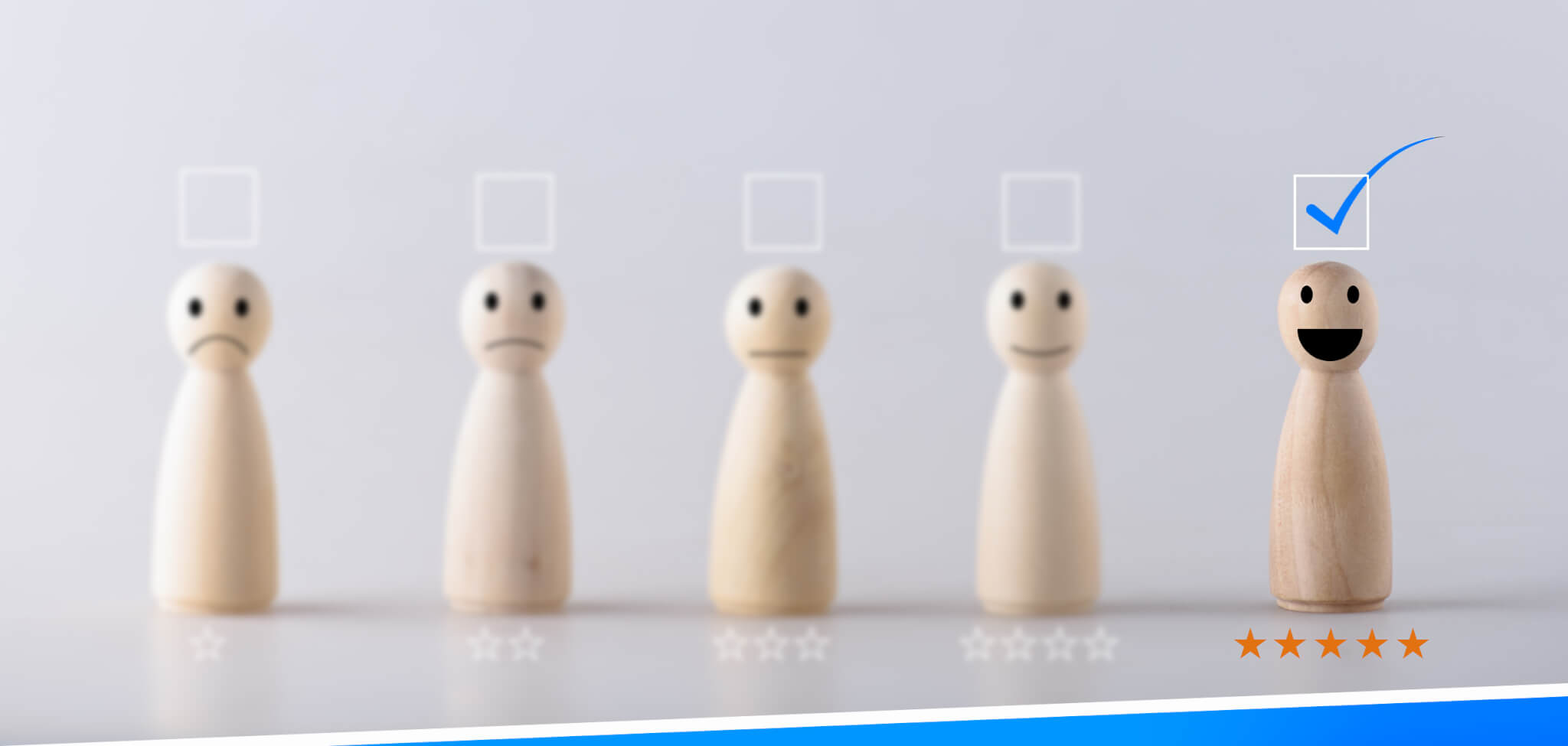The Fine Art of Focusing on Your Fans (and Ignoring the Haters)
It’s better to be one person’s shot of whiskey than everyone’s cup of tea.
You may have heard of a little tech company called Apple.
Since it was founded over four decades ago, Apple has grown to become one of the largest, most profitable companies in the history of the world. The iPhone 14 is the most-sold smartphone in the world, and 1.46 billion humans worldwide are iPhone users. (To give you a sense of that, there have been an estimated 100 billion people born on this planet from the Stone Age until now, and 1% of everybody who has ever lived has had an iPhone.)
However.
If you’ve ever witnessed a “discussion” between an iPhone user and an Android or Google loyalist, you know that for every Apple fan out there, there’s a big-time hater. Those people will NEVER buy an iPhone. They won’t even consider trying it — they think it’s the worst product in the history of the world. Yet, Apple remains at the top of the list of most-profitable companies.
Now, just for funsies, try to imagine a company — any company — that’s both successful and well liked by everyone.
Did you think of Disney? Google “people who hate Disney World” and see the tens of millions of hits. Coke sells 1.9 billion cans a day, yet has passionate hate clubs from people who will never touch the stuff.
What about some of the world’s most renowned restaurants? Maybe The French Laundry in Napa Valley, one of the most accoladed restaurants in history? Here is a recent 1 star review from Google:
“The food was ok, nothing outstanding for a 3 Michelin star restaurant. Service was good, the place very dark. Is not worth the price.
“Wine was good but the overall experience was not at all as we expected. This restaurant is overrated and I wouldn’t recommend it.”
Their overall rating is only a 4.6 out of 5, and that’s about as high as any restaurant Google review rating ever gets.
My point? It is not possible to have a company or a product that everybody likes. And don’t say “challenge accepted” — it’s a bad idea and will drive you absolutely insane. To succeed in business, it’s imperative to understand that instead of focusing on how you can make the people who dislike your product like it, focus on how you can make the people who already love it, love it even more. The next person who buys your product will look very similar to the last person who bought your product. They will not be someone you converted from a hater to a lover.
Be a Success Detective
A quick story.
A client of mine wanted to sell classes on how to sell stock options. They built a bunch of material for the class, designed it as a six-week intensive, and then got to marketing. After a few weeks, though, it was clear that something (really) wasn’t working. They expected 2,500 sign-ups in the first month, but only received 1,000. That was barely enough to cover the cost of advertising, much less program development.
Why? They were afraid to alienate anyone, so their advertising went out with phrases like “A class for all levels, beginners to advanced!” and “Learning sessions designed for all levels of users.”
Their marketing sorta worked — they earned a lot of views and impressions, but barely anyone clicked through. And that’s the part that matters.
I pointed out to them what is already clear to you: Targeting everybody a little bit means nobody gets excited. If I’m an advanced user, I think it’s going to be too easy. If I’m a beginner, I think it’s going to be too hard.
To fix the problem, they did three very simple things.
- They divided the content in half and stretched it out a little bit. Instead of one, six-week class, they offered two, four-week classes.
- Each class was advertised with clear labels, like beginner or advanced.
- Pricing for each class was set at the same price as the original combined class. Less content for the same price.
And the result?
On the first try, they’d hit 1,000 signups, 25% of their goal. After changing things up and giving users less for the same price, they received over 5,000 sign-ups for the same marketing spend.
Even better, over 30% of the people who bought the beginner class bought the advanced class within 90 days! That means the program drove 1.3x as much revenue per user as they had originally planned.
Here’s the part you put on a coffee mug: Success is not making your product work for everyone. Rather, success is making your product work really well for a small group of people.
In other words, quality over quantity. Eliminate the phrase “cast a wide net” from your vocabulary.
They Like Me! Or, They Don’t.
The question you should always ask next: How do I apply this to my business?
What unites most entrepreneurs? They need to be liked. They crave it. To be disliked makes them feel physically ill. It’s why most business founders take so long to fire someone who is clearly a wrong fit for the organization — they don’t even want Tommy the Toxic Employee to dislike them.
First, acknowledge that you, too, want to be liked by everybody. It’s a hard thing for many people to say out loud, but once you own it you can dig into the psychology of why people like us are wired like this.
Next, identify the group of customers who fit into these two simple buckets:
- They love you and your product.
- You love them and would like them to give you their money.
Neither is enough on its own. If you have No. 1 without No. 2, you’ll be miserable. Imagine if you’re the world’s biggest iPhone fan, yet only sell things to people who are Team Android. It will grate on you until you quit.
If you have No. 2 without No. 1, you don’t have a business. I want lots of money from lots of people, but they have to be willing to give it to me. Which goes back to finding those true fans and giving them what they want. It’s the Circle of Life, without the cute lion cub and talking bird.
Your Opinion Doesn’t Matter
I can already hear you asking, how in the world do I track those people down and find out what they need? Start by asking your stans. Send emails to your repeat, loyal customers and ask them a few questions. First: Why do you love our product?
Once you have the answers, it’s essential, nay imperative, to throw out all of your own ideas of why you think they like your product. What you think doesn’t matter.
Read that again.
Let go of why you think your product is great. It doesn’t matter. What matters is why your customers love it.
Real-World Examples
Let’s take a look at some times throughout history where the customers thought a product was way cooler this way, even though the business intended it to be that way:
Post-It Notes were first marketed as Press’n Peel bookmarks in the late 1970s, strictly intended to serve as a bookmark that would stay in place instead of falling out. That’s it. They were sticky bookmarks.
Genius! Except nobody bought them.
So, the marketing team changed tactics. They gave them away for free during a test in Boise, Idaho, and asked people what they’d use them for. They discovered that the users loved them not for bookmarks, but for taking quick notes (and sometimes using those notes as bookmarks).
They rebranded to the iconic name and styling that we’re all familiar with and grew to become an irreplaceable part of the zeitgeist. In “Romy and Michele’s High School Reunion,” a pair of friends try to impress their classmates by saying they invented Post-it Notes. And in “Sex and the City,” Carrie Bradshaw utters one of the most-quoted lines in pop culture: “Berger broke up with me on a Post-it!”
But it has nothing to do with bookmarks.

More recently, the ubiquitous communication tool Slack was sold to Salesforce.com, Inc. for $27 billion. Do you know how that product started? As a failed video game.
Slack wasn’t originally intended to be used for broad workplace communication at all. It began as an internal tool, developed and used by the team at Tiny Speck while developing a now-defunct online game called “Glitch.” The team needed an efficient way to communicate and collaborate with each other, so they developed a messaging platform to meet their specific needs during the game’s development.
After the game shut down, they realized that the chat program they’d built was really useful, and they enjoyed using it. Without a video game to develop, they focused instead on turning their internal messenger into a standalone product.
Slack as a corporate communication tool launched in 2013, and today it’s become its own verb. (Can you Slack it to me?)
The list goes on:
- Bubble wrap was originally invented as a nex-gen wallpaper until IBM started wrapping their computers in it for protection during shipping.
- Viagra is a blood-pressure medication. It’s 100% associated with that other use, but that prescription is technically off-label.
- WD-40 was originally developed for the military to prevent corrosion on missiles, but today we all use it to fix squeaky door hinges.
The tie that binds all of these examples is that it didn’t matter what the original manufacturer intended it for. Customers decided otherwise, and that’s what stuck. So when you ask your customers what they like about the product, take them seriously — even if their answers aren’t what you expected.
Turning Feedback Into Upgrades
The next question to ask is “What can we do to make our product even better?” Again, your customers’ answers may be different from what’s in your head. Just like in the previous instance, though, their opinions trump yours.
My favorite example of what not to do comes from JCPenney. In 2012, the department store decided to step into the digital era and leave paper behind. That meant no more paper coupons, Sunday mail inserts, receipts with special codes, or associate giveaways on those 5% off paper slips. Instead, they just lowered their prices across the board so customers would still pay the same amount without all the extra work.
It’s an absolutely logical, commonsense thing to do to reduce friction and make it easier to buy. But it was a massive flop. Sales dropped 25% in the next quarter and their CEO was fired. Why? Because he took his own opinion over those of the store’s loyal patrons.
What their customers actually wanted was to clip coupons, to be offered deals at checkout, or to gain access to those special discount codes. They wanted to feel like they were clever enough to get a good deal. JCPenney brought back the coupons, but the whole thing never would’ve happened in the first place if they had just asked.
Side note: This isn’t to say that you should modify your product or add to your services based on one person’s assessment. Instead, look for trends and patterns. What do the majority of people say is their favorite feature? What’s the most common suggestion for the next upgrade? (In this case, both quality and quantity matter.)
And Now, the Haters
It’s bound to happen at some point. And for many small business owners, even one complaint can quickly turn into a spiral of self-doubt and second-guessing. (Ask me how I know.)
If you receive a complaint or a bad review, start by determining whether the person doing the complaining is actually someone who loves your product. If they aren’t, you have to learn to ignore it. Instead of firing back or assuming that everyone else hates your product, too, take a deep breath. Allow time for the initial emotional reaction to recede before responding, and just say something like “We appreciate you taking the time to give us feedback. Thanks for giving us a try!”
This requires a lot of self-discipline and positive affirmations, but I can’t stress enough how important this concept is. So many businesses go down in flames trying to be everything to everyone. They never figure out that great, profitable, successful companies never appeal to everyone. They appeal to their people.
My favorite coffee shop owner, Joe Nazir of Tōv Coffee in Portland, embraced this to the highest degree. After panicking about a bad review, he hired me for a coaching session. He came out of it with a new attitude about the person who wanted a Starbucks experience from his bespoke coffee shop. What did he do? He printed out the review, framed it, and put it on the wall.
He wanted to always be reminded that this person is not one of his people. He focused on what his customers loved about his coffee shop and grew his business — ironically — by taking over a vacant retail spot that used to be occupied by … Starbucks.
How to Find Your People
After you’ve done your initial research and obtained that valuable first-party information from your customers, you can expand on that to find others who share the same values. (If you don’t have access to that information, read this article to figure out who your customers are.)
Tactics for finding your crowd are continually evolving and getting better — especially with the advent of AI — but here are some of the most commonly recommended ways to find the right customers.
- Ask for referrals
- Send updates to your email lists
- Join organizations and attend trade shows
- Scroll social media
- Do a Google search
This is the third question in your email to your loyal customers: Do you know of anyone who might enjoy our product as much as you do? We’d love it if you could connect us! Word-of-mouth recommendations are highly valuable, especially when they come from a trusted friend. In fact, marketers say that referrals are one of the best sources for high-quality leads.
Sift through your data to see which customers abandoned a cart that included your product. If you’ve made upgrades or improvements since them, craft an email to let them know. Whatever made them hesitate the first time may no longer be a barrier, especially if you took the advice of your loyal fan base.
Especially if your product is B2B, you can connect with a lot of potential customers by joining industry or local organizations. In addition, making strategic appearances at trade shows can be great opportunities for both B2B and B2C companies.
Come up with some hashtags that are relevant to your product or service and search social media to see what people are saying. This doesn’t necessarily mean going through every platform, though. Artificial intelligence can help you determine which channel(s) your customers are likely to visit most frequently. Listen to what potential customers praise — or lament — about products similar to yours.
Type names, phrases, or questions that relate to your product or service into the Google search bar and see what comes up. (For even more relevancy, include the word “reviews.”) This will not only help you find out what others are talking about online, but where they’re talking about it and who they are. If you find a blogger, for example, who talks about products like yours, send them a sample and ask them to review it.
Next Step: Marketing Communication That Resonates
Once you’ve found a larger potential customer base online, it’s time to craft communication that resonates with them. Create messaging that tells them why your product is perfect for them and why they’re perfect for your product.
Whew! That was a lot. But now that you have accepted that you can’t please everyone, it’s time to learn how to go and get those people you do please. Check out our four-part series on sales and marketing.





The next person who buys your product will look very similar to the last person who bought your product. They will not be someone you “converted!” from a hater to a lover.